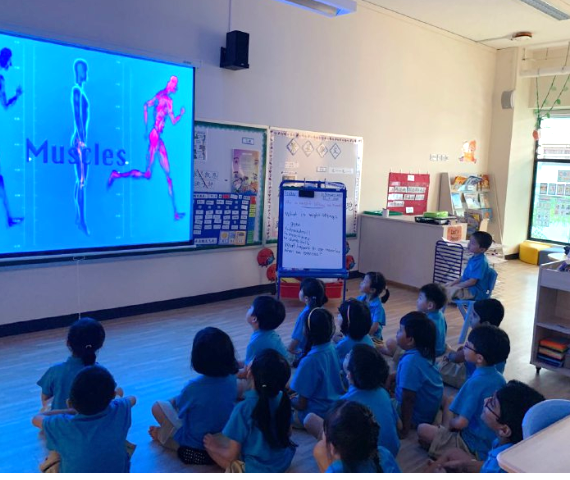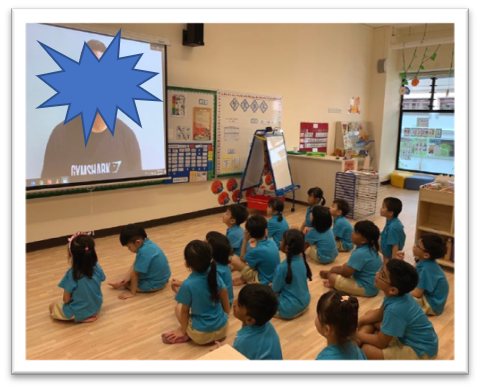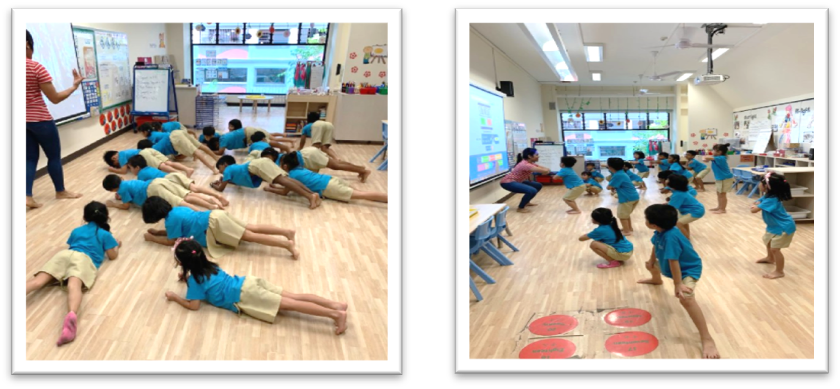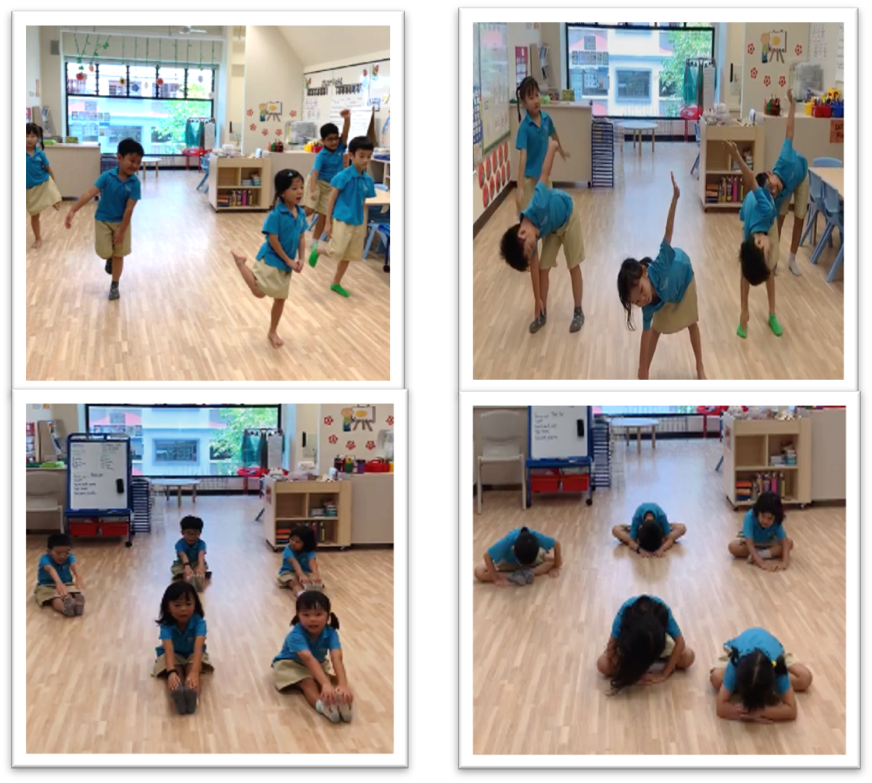Home >
Resources >
Activity Ideas >
Sports and Games >
"Let's Exercise" - MOE Kindergarten @ Wellington
"Let's Exercise" - MOE Kindergarten @ Wellington
Background
When children were learning about how regular exercise could help to keep them
healthy, one of the children said, “I see people doing this”, she paused and made
a lifting motion with her arms. “What is this called? Why do they do it? And why is
it so hard?” Her questions sparked off a lively discussion amongst the children and
the class decided to embark on the topic of ‘Exercise’ for their Weeks of Wonder
(WoW) project in Term 1.
Objectives
The WoW project allows children to investigate a topic of their interest. Through
this project, children were given opportunities to:
• gain a deeper understanding of how exercise helps to strengthen their muscles
• learn about and enjoy doing different types of exercise
• gain a deeper understanding of how exercise helps to strengthen their muscles
• learn about and enjoy doing different types of exercise
Phases of WoW Project
I WONDER…
Their interest in weight-lifting and exercise sparked off the following questions from the children:
• What is weight-lifting?
• How can we exercise to make our muscles stronger?
I FIND OUT…
In the ‘I Find Out’ phase, the children discussed, planned, and carried out their investigation to find out the answers to their questions. The children started off by finding out the answers to their first two questions, ‘What is weight-lifting?’ and ‘Why do people lift weights?’. They suggested to look up the Internet for some informative videos. After watching the videos, the children gained new information about weightlifting. Some of their findings were…
• “We need special equipment to carry weights.”
• “When we carry weights, our muscles will become stronger.” From this, the children had more questions about muscles and other exercises which then set the context for further investigation.
“How do muscles work?”
Tapping on what the children had learned about how lifting weights as a form of exercise can help them strengthen their muscles, they watched another video that provided them with more information about different muscles and their functions in the body. The children discovered through the video that:
• They have over 600 muscles in their body.
• They have voluntary muscles all over their body including their chest, abdomen, back, fingers and toes.
• The heart is an involuntary muscle which means that its movement cannot be controlled.

After learning about the effects of exercise on their muscles, the children wanted to know about other exercises they could do to make their muscles even stronger. The children wanted to invite an expert on exercise to the class for an interview. They consolidated their questions and e-mailed them to a fitness instructor, who was a friend of one of the teachers in the kindergarten.
The fitness instructor responded to their questions through a pre-recorded video. In the video, he addressed the children’s questions and even showed them different exercises that they could do to further strengthen their muscles.

 Participating in a HIIT workout
Participating in a HIIT workout

Their interest in weight-lifting and exercise sparked off the following questions from the children:
• What is weight-lifting?
• How can we exercise to make our muscles stronger?
I FIND OUT…
In the ‘I Find Out’ phase, the children discussed, planned, and carried out their investigation to find out the answers to their questions. The children started off by finding out the answers to their first two questions, ‘What is weight-lifting?’ and ‘Why do people lift weights?’. They suggested to look up the Internet for some informative videos. After watching the videos, the children gained new information about weightlifting. Some of their findings were…
• “We need special equipment to carry weights.”
• “When we carry weights, our muscles will become stronger.” From this, the children had more questions about muscles and other exercises which then set the context for further investigation.
“How do muscles work?”
Tapping on what the children had learned about how lifting weights as a form of exercise can help them strengthen their muscles, they watched another video that provided them with more information about different muscles and their functions in the body. The children discovered through the video that:
• They have over 600 muscles in their body.
• They have voluntary muscles all over their body including their chest, abdomen, back, fingers and toes.
• The heart is an involuntary muscle which means that its movement cannot be controlled.

Watching a video about muscles
“How do we exercise to make our muscles stronger?”After learning about the effects of exercise on their muscles, the children wanted to know about other exercises they could do to make their muscles even stronger. The children wanted to invite an expert on exercise to the class for an interview. They consolidated their questions and e-mailed them to a fitness instructor, who was a friend of one of the teachers in the kindergarten.
The fitness instructor responded to their questions through a pre-recorded video. In the video, he addressed the children’s questions and even showed them different exercises that they could do to further strengthen their muscles.

Listening attentively to the fitness instructor answering their questions
 Participating in a HIIT workout
Participating in a HIIT workoutI KNOW...
In the ‘I Know’ phase, the children consolidated their findings from the various
activities and decided to create their own workout video featuring all the
exercises they had learnt. During a class discussion, they selected exercises which
targeted different muscles and planned the video to great detail, such as types
of music, tool for recording, warm-up and cool-down exercises. They even
considered the timing and location for the video recording.

Performing the exercises for their workout video
Their videos were then uploaded onto an online application for private viewing
by the children’s parents. Through this project, the class had an enriching time
constructing their own knowledge about exercise in a meaningful way. They were
also able to make connections between their learning and everyday activities by
applying their newfound knowledge in subsequent outdoor activities and
exercise sessions in the kindergarten!